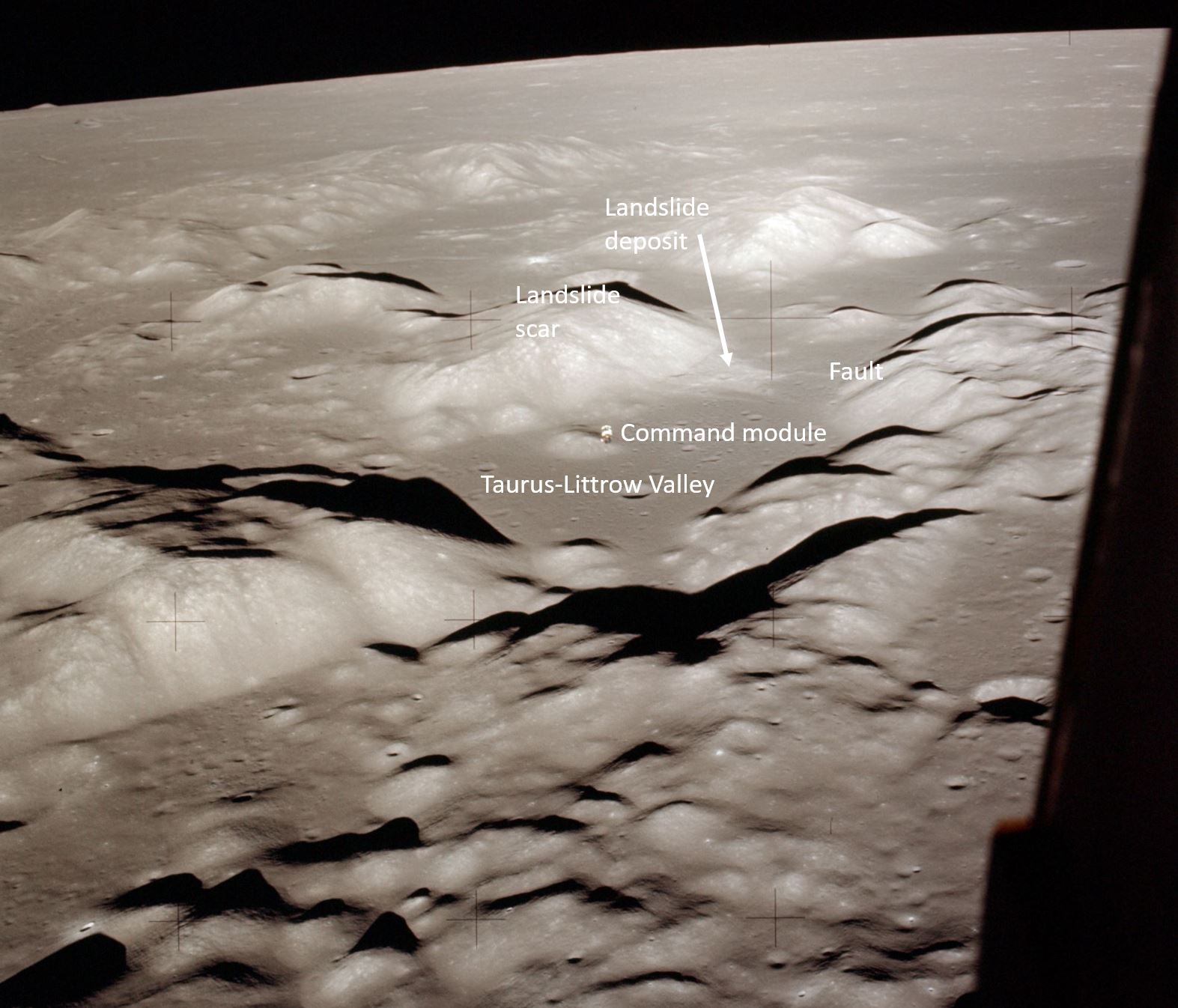21 April 2020
The most expensive landslide samples of all time? Moon rock
Posted by Dave Petley
The most expensive landslide samples of all time? Moon rock
The EOPortal website has a nice article about work underway to open and re-analyse two samples of moon rock, recovered by the 1972 Apollo 17 mission and safely stored thereafter by NASA. Since the mission analytical capabilities have vastly improved; these samples were wisely preserved for future generations anticipating that this would occur. NASA has decided that now is the time to take another look.
The samples in question, 73002 and 73001, are part of a c.70 cm core of regolith collected near Lara Crater within the narrow Taurus-Littrow Valley on the moon. This site is geologically very interesting. As EOPortal puts it:
The Apollo 17 landing site lies within the narrow Taurus-Littrow Valley, surrounded by several steep mountains including the North and South Massifs, with a fault scarp, caused by a difference in elevation between the two sides of the fault, cutting across the entire region.
The floor of the valley consists of lava and ejecta from impact events. The valley is depicted in this image, which I have annotated to show the key features:-

Annotated image showing the landslide on the moon sampled by the astronauts on Apollo 17. This is Hasselblad photograph taken from the LM Challenger as it passed over the Taurus-Littrow Valley. Image AS17-147-22464 [NASA].
As the image shows, the sample was collected from a landslide deposit on the moon, the origin of which was the massif shouwn in the image above. There were good reasons for sampling a landslide – it provided access to deposits that originated on the hillside above, which was inaccessible to the astronauts, giving the geologists a better opportunity to understand the lunar geology.
A part of the aim of re-analysing these samples is to try to better understand this landslide. For example, a key issue is whether the landslide was triggered by an impact event, by movement of the fault or by another process.
The cost of the Apollo missions to the moon is believed to have been $25.4 billion, which was about $200 billion in a modern-day equivalent. These are two extremely expensive landslide samples. Understanding planetary landslides is a very interesting aspect of the science of mass movements; it will be fascinating to see what these studies reveal.


 Dave Petley is the Vice-Chancellor of the University of Hull in the United Kingdom. His blog provides commentary and analysis of landslide events occurring worldwide, including the landslides themselves, latest research, and conferences and meetings.
Dave Petley is the Vice-Chancellor of the University of Hull in the United Kingdom. His blog provides commentary and analysis of landslide events occurring worldwide, including the landslides themselves, latest research, and conferences and meetings.